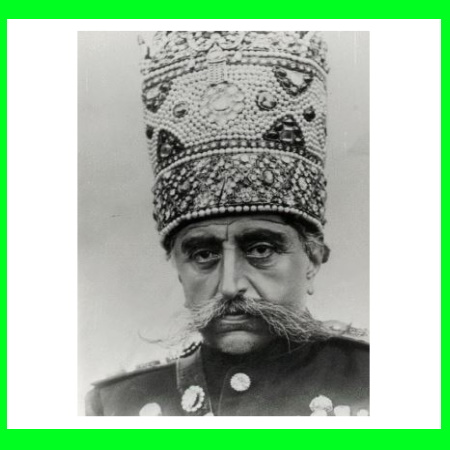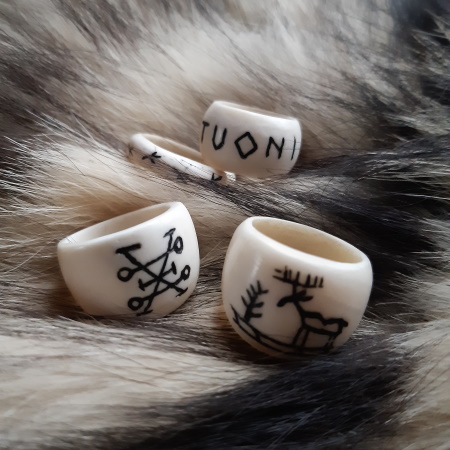The World of the Moche, by Barbara Steinberg.
On the North Coast of Peru, a line of extreme environments begins with the Pacific Ocean, is edged by a sandy strip of desert, and continues toward the Peruvian Andes’ towering snow-capped mountains. Some have an altitude of 22,000 feet, while the Equator lies below. Traveling east, the line descends into the lush rain forests of the Amazon Basin.
The Moche inhabited 350 miles of valleys on the sandy strip — from Lambayeque to Nepeña (picture 1). Rivers started in the mountains, went through canyons, and ended up in the valley floodplains. By channeling these rivers, the Moche achieved a complex irrigation network, which allowed them to cultivate more land. Larger rivers in the North produced warmer valleys that attracted monkeys, pumas, and boa constrictors.
The ocean was a fish basket overflowing with mollusks, crayfish, crabs, catfish, anchovies, and octopuses. Supplementing this diet were fox and deer. Crops included peanuts and squash. Domesticated llamas provided wool, meat, and transportation into the Amazon Basin, and dogs helped them hunt.
Along the coast, boats transported the Moche to trade, or barter with other cultures. The abundance from trade was so significant, it allowed people to become warriors, priests, and artists, who made meticulously crafted objects for the elite.
In tombs, archaeologists found a headdress with feathers from the Amazon Basin on a Priestess in the Sacrifice Ceremony; as well as gold, silver, and gilded copper jewelry inlaid with lapis lazuli from Chile and Spondylus shells from Equador. Gilded copper alloys were the medium for color change.
However, the Moche language was symbolic, not written. They recorded their history in metal and clay. The only way archaeologists could place individual objects in context was to reconstruct their civilization by analyzing the fine-line drawings on some of the pottery (picture 2).
In the Warrior Narrative, adorned soldiers marched into battle, fought, and defeated their captives. The captive was then made to bleed from the nose. His clothing, weapons, and ornaments were removed and tied into a weapon bundle, which was hung from the victor’s war club (picture 2a). With ropes around their necks, wrists broken, and hands tied behind their backs, captives were paraded in the nude before they were sacrificed on top of a large pyramid (pictures 3, 4).
Ritual combat expressed valor between two warriors (picture 5). Portrait vessels were sculptures of an individual face. Rarely, the same warrior could be identified, as he was portrayed throughout his career. Most of the time, only one vessel of an elaborately adorned victorious warrior was unearthed. If a warrior was defeated in ritual combat, he faced the same fate as captives. (pictures 6, 7)
The Sacrifice Ceremony transformed both priests and captives into ancestors. A priest prayed for rain to cease. His attendant slit throats with a copper knife, or tumi (picture 8). A Presentation Ceremony followed, where a goblet was filled with blood to nourish a god. Drinking it transformed the priests into sacred ancestors. Attendants then laid the recent dead on the plaza floor. Flies alighted quickly. As maggots emerged from their eggs, the corpses also transformed into ancestors.
The Moche were reluctant to show themselves as sacrificers. Instead, an anthropomorphic bird or jaguar does the deed, sometimes under the supervision of the owl warrior (examine picture 3 once more).
Anthropomorphic and supernatural deities were general all over the Moche world. Along with the Spider Decapitator, or X Sacrificer, owl and jaguar decapitators roamed. Owls and jaguars could have either been portrayed alone or as humans with masks (pictures 9, 10). The Snake Belt God (picture 11), Demon Fish (picture 12), dragons, crab warriors, and mythical crested animals also populated the Moche imagination.
The elite were dressed in the splendor of gold. Their costumes combined gold and silver, which expressed the Moche perception of dualism: the sun and moon, men and women, the victorious and the defeated.
Craftsmen beat metal into a thin sheet with faceted stone hammers to make smooth, highly polished, and reflective surfaces. Then they cut, annealed, scored, chased, and hammered the metal over a wooden mold to add repouseé or embossed decorations (picture13). To complete the process, the surface was polished with abrasive sands.
For copper, Moche artists used depletion gilding. Copper and gold underwent repeated hammering, followed by annealing until the surface was depleted of copper. At that point, it was almost pure gold. When theobject was further heated, the gold spread smoothly across the surface, completely covering the less valuable interior metal. Another gilding technique involved dissolving fine grains of gold in an acid solution. When a copper object was dipped into this solution, its surface was uniformly coated by electro chemical replacement with a thin film of gold.
On garments, platelets were sewn together with wire, while gilded copper dangles were soldered on. The garment shimmered in the sun (picture14).
Nose ornaments, or narigueras, were suspended by perforating the septa of the nose. Some were highly polished crescents (picture 15), while others were inlaid with turquoise with gold dangles below (picture 16).
In this nose ornament, a monkey’s face protrudes from a symbolic representation of the X Sacrificer (picture17), and a gold double-headed snake borders a silver crescent (picture18). Our last example depicts a fanged deity as the trunk of a vilca tree (picture 19).
The Moche used lost-wax casting to make hollow beads for the necklaces found in tombs. Sound was important to them. Before the front and back pieces were soldered around the periphery, the bead was filled with one or many metal pellets, as well as hollow metal spheres to make them rattle. (picture 20). Both were then attached to a web to make a necklace, as in this spider-man necklace (picture 21, 22, figures a, b).
Necklaces frequently portrayed owls, monkeys, and severed human heads (picture 23). Archeologists even found a necklace made of hollow peanut-shaped beads. Two strands of 5 of gold peanuts functioned as the outside border. Five silver beads were paired to make the inside border. The silver beads created a balance, which expressed duality (picture 22, bottom).
Some individual beads portrayed human heads with faces or eyes of lapis lazuli (picture 24). The jaguar decapitator, a gold feline bead with inlaid teeth of red Spondylis shell, was also found (picture 25). Here is a selection of beads (picture 26).
The Moche costume continued with the backflap — a large object suspended from the back of the belt. Frequently one half was gold soldered to the other half, which was silver (picture 27).
Pectorals had a beaded style, adorning the elite wearer with a collar. It covered the chest, extended over the shoulders, and was tied behind the neck (pictures 28, 29). Atop this octopus pectoral is a human head, necklace and pectoral. One-hundred separate parts of gold and silver were soldered together (picture 30). The octopus was seen as a conduit between the watery underworld and land.
Headdresses consisted of a cloth binding adorned with large decorative frontlets. One shaped like an octopus with a central deity head and extended was found in the tomb of Sipan, beside a clay figurine of a man wearing the same headdress. Another frontlet portrayed a central deity flanked by crested animals. The fourth and fifth frontlets in this picture had a human heads in the middle of an X, signifying the X Sacrificer. Crested animals flanked the sides and top. The last headdress frontlet depicted an owl with wings extending outward under a large gold crescent (picture 31). A large crescent-shaped ornament attached to the back completed the headdress. (picture 32).
The Moche also wore ear flares. Most common were long gold tubes. They consisted of a large circular front piece with a tubular post attached to the center of the back (picture 33, 34). The Moche enlarged the perforations in their earlobes to wear them.
In another style, decorated circular discs serve as the front of the ear flare. This pair has turquoise inlaid ducks, which are surrounded by an inner border of gold beads and a wider gallery of inlaid turquoise. The design is completed with final circle of gold beads (picture 35). One of the best known set of ear flares can be seen in the Metropolitan Museum of Art. Squares of light green turquoise are inlaid on a sheet of hammered gold. Winged runners, made with turquoise, sodalite, and shell protrude. Bordering the design are also hammered beads. (picture 36).
Each part of the Moche costume was meant to be part of an ensemble. When worn together, the complete costume would have imparted a grandeur and elegance far greater than the sum of its parts. The life-sized mannequin is dressed in exact replicas of objects chosen from one tomb. (picture 37, 48, 39).
The plethora of elaborate ornaments and garments animated the wearer. The Moche gathered precious materials from trade. Each piece of a costume was hand-made. Colors emerged from mixing different metals, gilding copper, and inlaying eyes, teeth, and faces with lapis lazuli or Spondylosis shells. Pellet rattling sounds contributed lifelike movement, and objects were made anthropomorphic by the addition of human arms, legs, and heads.
Pottery and jewelry might have documented Moche civilization better than words. Artifacts told us what they valued: meticulous, hand-made craftsmanship; color; sound; shiny surfaces; lifelike jewelry that moved, animated designs with human limbs and faces; ritual sacrifice and combat; transformation; religion; and dualism in nature. Scholars still debate the socio-political organization, but it is generally agreed that the society bore stark inequalities. Over a thousand years later, we still stand on the ledge of the unknown (picture 40).
References:
Christopher B. Donnan, UCLA. The Construction of Value in the Ancient World, chapter 8.
Walter Alva and Christopher B. Donnan, The Royal Tombs of Sipán. Museo Nacional Bruning de Lambayeqe, Peru and the UCLA Fowler Museum of Cultural History.
Christopher B. Donnan, Moche Tombs at Dos Cabezas, Costen Institute of Archeology, UCLA.
Christopher B. Donnan, Moche Portraits from Ancient Peru, University of Texas Press, Austin.
Christopher B. Donnan and Donna McClelland, Moche Fineline Painting: Its Evolution and Its Artists, UCLA Fowler Museum of Cultural History.






